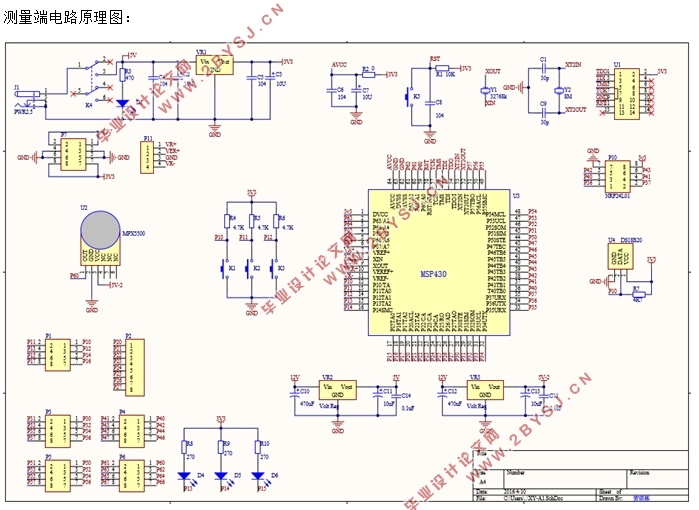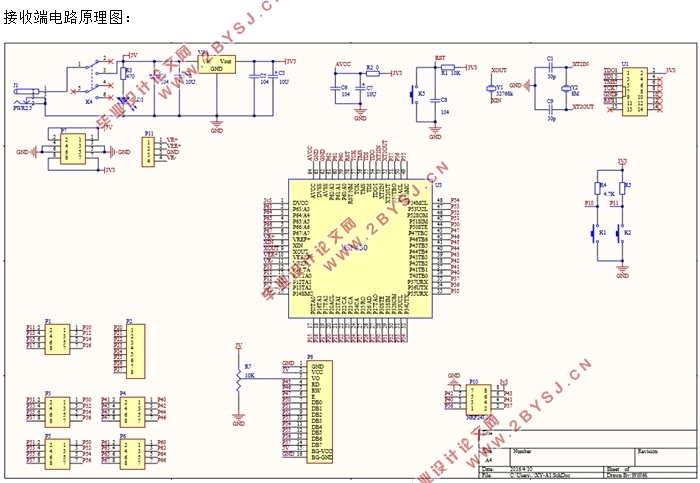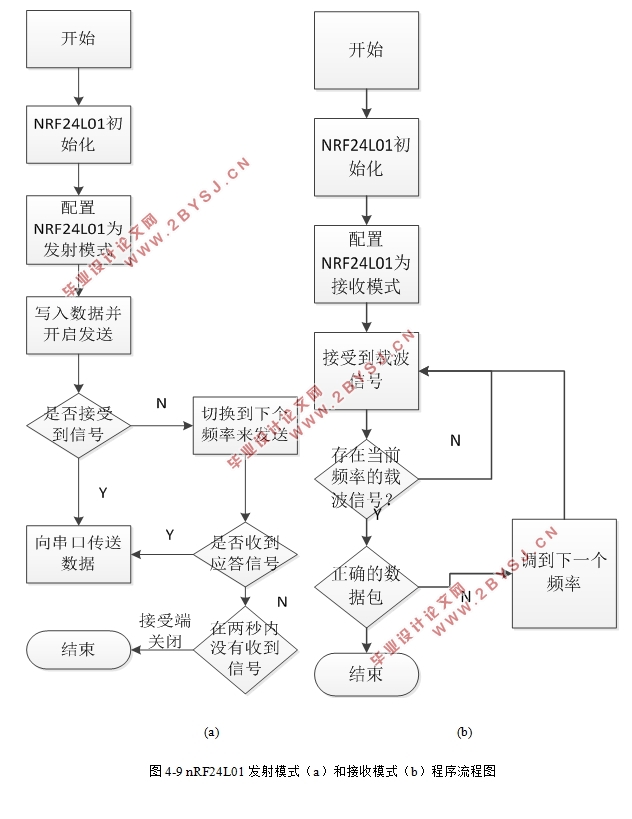基于MSP430单片机无线胎压监测系统设计(附电路原理图)
无需注册登录,支付后按照提示操作即可获取该资料.
基于MSP430单片机无线胎压监测系统设计(附电路原理图)(论文11000字)
摘要:本系统以高性能低功耗的MSP430单片机为主控芯片,以抗干扰能力强的压力测量芯片MPX5500和无线射频收发芯片nRF24L01为主要芯片实现无线胎压监测。系统被分为测量端和接收端,之间通过无线传输进行通讯。测量端主要对汽车轮胎进行气压、温度数据的采样,进行AD转化后通过无线发送至接收端。接收端对接收到的信号进行处理,然后显示在液晶屏上。如果轮胎气压超过设置的上下限则发出报警。该系统可以完成对汽车轮胎胎压的实时监测。该系统具有实时性、可靠性、实用性、应用方便等特点。
关键词:MSP430;压力传感器MPX5500;无线传输;报警
Wireless tire pressure monitoring system based on MSP430 MCU
Abstract: The system uses MSP430 MCU as the main control chip which has high performance and low power, and the pressure measurement chip MPX5500 with anti-interference ability and wireless radio frequency transceiver chip nRF24L01 as the main chip to achieve wireless tire pressure monitoring. The system is consisted of the measuring end and the receiving end, and they communicate through the wireless transmission. The tire pressure and temperature data of automobile are collected by the measuring end, then sent to the receiving end after AD conversion through the wireless transmission. The receiving end mainly copes with the received data, and then shows the results on the LCD screen. If the tire pressure exceeds the upper and lower limit of the setting, the alarm will ring to complete the real-time monitoring of the tire pressure. The system is characterized by real time, reliability, practicability and convenient application.
Keywords: MSP430; MPX5500 sensor; Wireless transmission; Warning



目 录
1 绪论 1
1.1 课题研究的背景 1
1.2 课题研究的意义 1
1.3 课题研究的主要内容 2
1.4 本论文的内容综述 2
2 系统总体方案设计 2
2.1 功能要求 2
2.2 设计思路 3
2.3 方案选择 3
2.2.1 压力传感器选择方案 3
2.3.2 单片机主芯片选择方案 3
2.3.3 显示器选择方案 4
2.4 总体设计框图 4
3 系统硬件设计 4
3.1 概述 4
3.2 主控模块设计 5
3.2.1 MSP430F149芯片的简介 5
3.2.2 MSP430F149单片机的最小系统 5
3.2.3 电源供电模块 7
3.3 测量端设计 7
3.3.1 MPX5500压力传感器 7
3.3.2 DS18B20温度传感器 9
3.3.3 ADC12模数转换模块 10
3.4 接收端设计 11
3.4.1 LCD1602液晶显示模块 11
3.4.2 蜂鸣器报警模块 13
3.4.3按键模块 13
3.5 NRF24L01无线传输模块 14
3.5.1 nRF24L01无线传输模块简介 14
3.5.2 nRF24L01无线传输模块工作原理 14
3.6 系统原理图的绘制 15
4 系统软件设计 16
4.1 程序编译软件IAR简介 16
4.2 测量端主程序设计 17
4.3 接收端主程序设计 18
4.4 其他子程序设计 18
5 系统分析与调试 21
6 总结与展望 23
参考文献 23
致 谢 25
附录A 26
附录B 27
